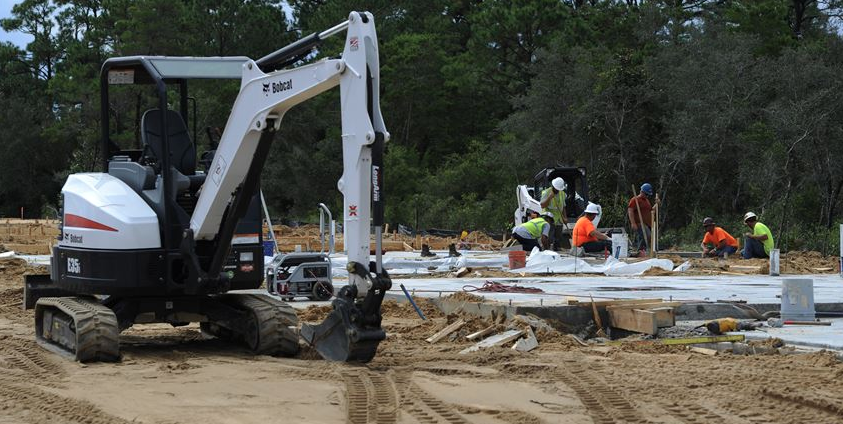In my article, “10 Tips to Get Your Field Quality in Order,” I took readers on a less-than-sentimental journey to the single worst project I have walked among hundreds since the 2007 housing crash. That builder, like every other in North America, is highly concerned about margin, and yet I could easily identify thousands of dollars per unit in product and process waste easily visible to the naked eye.
The negative impact on quality is undeniable. Let’s say this builder was building 100 units per year, and that I could show them conservatively $2,500 in savings per house, that’s $250,000. The only catch is they have to start thinking differently (note that I did not say “work harder”). How do you think the builder would respond? How would you respond? We will return to these questions later, but let’s first address what this new way of thinking entails.
At the end of last month’s article, I offered a PDF of the article combined with a three-part series on quality management I wrote for Professional Builder this spring. In my 15 years of writing articles and columns for home-building industry publications, I have never received more requests for copies of my work than I did last month. I must have struck a nerve. Clearly, there are many builders as concerned with the decline in quality as I am. And, judging from the emails I received during the past 30 days, builders are highly committed to reversing the trend. So as promised, here is a more detailed look into the 10 steps to improving field quality that I introduced last month:
1. Incoming Quality
I do a great many presentations to groups each year, and each time I ask, “If I went to your building sites this morning, how many of you could show me evidence — and it has to be more than anecdotal — that your field managers conduct regular incoming quality audits?” For example, when was the last time any of them ran a slump test or took the temperature of a load of concrete? Both are simple to do and can protect you from an even bigger load of trouble. When was the last time they physically counted exactly what arrived in the lumber drops, and then gave the feedback to both purchasing and the lumber supplier? When was the last time they checked brick, stone, roofing, insulation, or drywall materials prior to installation? Once suppliers know you do it periodically, guess what? You can do it a lot less frequently; in some cases, once or twice a year will do. There are only two reasons to do incoming quality audits: to improve quality and to save money. This is an essential building block of quality process and a basic requirement in nearly every industry, except home building. If you believe this takes more total time and money compared to the way we do it now, you can start your change-in-thinking journey right there.
2. Suppliers and Trades Selection
When getting to know a builder, one of the most obvious signs of trouble is to discover that purchasing makes most buying decisions with little meaningful input from the field. More often than not, this is accompanied by a low-bid mindset where the buying decision is made on bid price alone. Low bids are great, but they are only one component of total cost, and total cost is the only thing that matters. I have written extensively about this in the past (10 Elements of the Total Cost Model). Regular structured — and the key word is “structured” — feedback from both field construction and service on the performance of suppliers and trades on dimensions of delivery, schedule, and quality is essential. Without it, you are pretty much guaranteed to make the wrong buying decisions on a regular basis.
3. Scopes of Work – Applied
How many of those on construction sites truly understand the definition of a completed job to your specifications? And when was the last time you had a good discussion about that? Here is a clue as to whether scopes are being applied in the field: When was the last time anyone — either your people or your suppliers or trades — complained about them? A well-written scope of work defines a completed job in clear terms and prescribes remedies for resolution of all problems. It is a two-way, living document that spells out not only builder requirements of suppliers and trades, but also what they have a right to expect from you. It should be demanding of both sides. As such, a serious debate about some aspect of the scopes should be expected from time to time. Go to the field and conduct a “scopes audit.” See if your field managers can even find them, and determine which parts are being followed and which are not. Now find out why. Fix it, and involve suppliers and trades in the fix. Watch quality improve.
4. Schedule
There is simply nothing more important for the entire company and nothing that impacts profit more than schedule. I have written more about schedule than any other topic over the years, but this bears repeating: The best builders are the best schedulers, and the best schedulers are the best builders — period. In my 25 years getting to know hundreds of builders, I have never seen this rule violated. Yet I am almost reluctant to bring it up, fearing a reign of terror brought down on the heads of field superintendents nationwide. Here’s the rub: Yes, field managers are responsible for the schedule on a daily basis. But schedule failure often has its roots all the way back from land purchase to product design to marketing to supplier and trade selection. By the time the superintendent takes responsibility for the actual house build, the schedule can become nearly impossible to run efficiently. Good scheduling is an enterprise-wide affair, but there is one thing you can count on: poor schedules always negatively impact quality.
5. Job Ready – Job Complete
Assuming the field manager actually has a fighting chance to maintain a tight, efficient schedule, at the street level, there is nothing more important than rigorously enforcing clearly defined standards of “job complete” by the definitions that should be in your scopes of work. Again, this has to be a two-way discussion, not just handing over a booklet. There is no more effective practice than paying trades fairly and immediately for their work, but if and only if the job is 100 percent complete. If you do it all up and down the line, as each trade arrives at a job 100 percent ready, they lose any will to fight you over leaving their job 100 percent complete. Everyone saves time. Everyone makes more money. Quality improves. And the homeowner gets a better house.
6. Product Quality
Defining quality is not easy. Witness the oft-used definition from Total Quality Management of “fitness for use.” Not very satisfying, is it? I recently misplaced (I am still hoping it turns up) my 35-year-old, prized framing hammer and left for a week-long volunteer project with a new hammer that I got a good deal on. I did a lot of framing with it, so I’d have to say it was fit for use. But it was not truly a quality product because I did not like the balance or the feel. There’s that low-bid mentality again. For each component in the house, you have to establish your own definitions of quality and you have to involve your suppliers and trades in the process. Communicate those standards to everyone, including your home buyers. Now, hold the line. You will be tested, and failing that test has severe consequences.
7. Site Conditions and Waste Management
Site waste is a symptom, not a problem. That dumpster is simply a holding bin for a whole bunch of things going wrong. I suggest you paint them all green with big dollar signs on them and attach flashing lights proclaiming, “This is your money and I am hauling it to the dump.” It should make you crazy, yet few builders give it much thought. How much are you spending per site? The last NAHB study I saw reported the national average was about $1,200 per unit. I meet builders that have taken it down to the $400-$500 range, and that is great. But here’s a target for you: $250. That’s about an 80 percent reduction. I picked it because so many other industries outside of home building have brought their waste burden down that much, and more. So treat it as the symptom it is and launch a comprehensive attack on the sources. As you discover and fix each one of the problems that contribute to this mess, you’ll find yourself improving a myriad of other issues as well, including quality.
8. House Cleanliness
Prospective customers may overlook or simply not understand a site waste problem, but they will never miss poor house cleanliness and all that it implies about the builder. Whereas site waste is a symptom of poor systems, house cleanliness is better understood as a symptom of a poor culture. A messy house in disarray during construction indicates a lack of respect for everyone involved — the builder, the trades, and the home buyers. How can we produce quality in a culture of disrespect? Impossible.
I once watched in amazement as Bill Pulte, leading a veritable parade of project managers and superintendents down the street of a project in a new city, stooped to pick up a candy wrapper and deftly put it in his pocket. Soon, everyone was looking for a wrapper or a can or a cash register receipt — something, anything — so they, too, could “be like Bill.” Those small steps by senior management quickly manifest themselves throughout the organization. But if you don’t stop and pick up trash, don’t expect anyone else to care.
9. Supplier and Trade Evaluation
Every supplier and trade must be evaluated regularly by the superintendent using established, known criteria and tracked over time. Purchasing must then include this data as a critical factor in the bid-and-selection process; it is essential for establishing total cost. Even if purchasing never sees the feedback, considerable benefit still accrues. The very fact that your field personnel sit down periodically to seriously consider the quality of their suppliers and trades will greatly sensitize them. They’ll pay more attention, watch more closely, and walk houses with a heightened level of awareness. Should they take the next bold step and share the feedback directly with suppliers and trades, a great dialogue will begin and learning will be enhanced. Make it two-way and quality will unavoidably improve.
10. Crews Matter
Be honest: When was the last time you negotiated with your trade contractors for specific crews — by name? That is tantamount to not caring whether you have Peyton Manning or Rex Grossman playing for you in the Super Bowl. Ask any field manager, past or present, to reflect on the best two or three crew leaders he ever had. Then ask what life on the project would be like if 80 percent of the crews were like those all-time top performers. He’ll tell you that everything would get dramatically better, including cost, schedule, and quality. This is a very simple idea that everyone understands, yet hardly anyone practices. If this is the only change you make this year, your quality will improve next year, guaranteed. Of course, you have to earn it. Why would these trades agree to give you their best crews if you are not their builder of choice?
In the introduction to this article I made a rather audacious statement that the only thing you have to do to increase both margins and quality significantly was to learn to think differently; working harder is not part of the equation. Yes, it will take real work to implement these 10 elements, but the ROI in time saved from rework, reschedule, warranty, and all of the associated administration and management costs is huge. A ten-to-one payback is your minimum expectation. Seriously confronting these elements will force you to think differently, and that will make all the difference.













